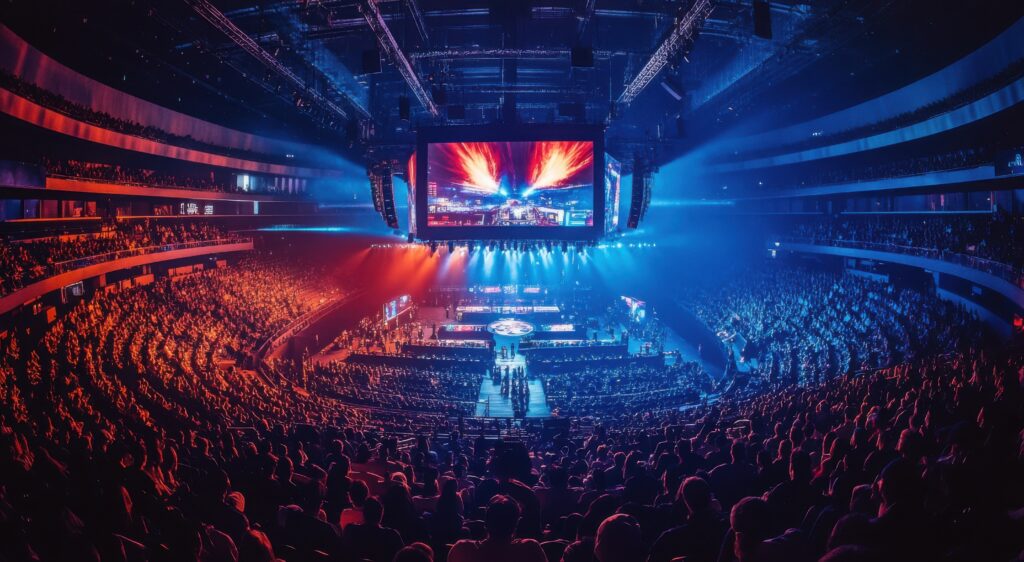The Overwatch League 2020 Grand Finals were another remote production win for Esports
On Saturday, October 10, Esports fans were treated to the 2020 Overwatch League (OWL) Grand Finals, delivered through the ingenuity of Activision Blizzard. While the past two seasons have culminated in finales hosted in Brooklyn and Philadelphia, this year was the first time that the OWL Grand Finals were entirely remote, and the effort that Activision Blizzard put into ensuring an exciting and successful event for those invested in competitive gaming was impressive to say the least.
The last few years have been a dynamic period for Esports, showcasing an increasingly rapid rise from what many considered a niche hobby to a bona fide international phenomenon. Since the beginning of the COVID-19 pandemic, Esports teams and events have striven to find innovative ways to keep fans engaged, and the results have been resoundingly positive. However–while Esports might have been in one of the better positions when it came to transitioning to remote production–the industry clearly has no intention of resting on its laurels. With the OWL Grand Finals, teams pulled out all the stops to guarantee that no fans found themselves underwhelmed.
Overwatch in quarantine
Back in April, tech and culture website The Verge explored what the remote studios being used for the OWL would look like, providing a wealth of insights to both neophytes and industry veterans. As discussed by reporter Andrew Webster, the league’s transition occurred in multiple stages. While there was always going to be a need to abandon the Blizzard Arena in Los Angeles–where the majority of previous broadcasts were crafted–the initial plan to adopt a hybrid “home-and-away” approach (which included teams in 19 cities and 3 continents) fell through in fewer than 6 weeks.
Recognizing that the path forward would require every player, coach, and technician to work from home, OWL got to work formulating their new strategy.
More so than many sectors of M&E, OWL found itself in a relatively solid position, considering that a shift to more explicitly cloud-based production had already been underway before the whisperings of the pandemics impact changed the game entirely. Because simultaneous competitions were being broadcast from multiple locations, having remote capabilities and tools that could be accessed from nearly anywhere was as inevitable as it was essential. The COVID-19 conditions simply accelerated the process.
On top of basic cloud software, one of the cooler innovations that Overwatch League started using was an application called TeamSpeak. Designed to allow individuals to set up chats, TeamSpeak also allows users to create rooms, which enables teams to arrange departmental meetings on the fly, even during production. Because Esports are not “filmed” in the same way as a football game or a golf tournament, in-game cameras operated by “observers” capture most of the action. In writing his article, Webster discusses how he had the opportunity to sit in on an observer room, and listen to real-time discussions about which cameras needed to be moved, which vantages were getting insufficient coverage, all while directors communicated about which shots to use, what to dump, when to cut, etc. While OWL broadcast heads admit that going remote took some adjustment for different teams–not having access to every piece of familiar equipment can be disorienting–the transition went far more smoothly than many others have experienced.
Bringing it all home
Considering the success that OWL has seen over the course of the season, prognosticators were optimistic about the October Grand Finals from the get-go. With over 100 personnel working in North America and Korea, the event promised to be an all-hands-on-deck production for Activision Blizzard.
Perhaps the most interesting solution that technicians devised was the virtual arena in which the finals were held. While the majority of Esports action takes place in the game, broadcasts still included shots of commentators, players at their computers, and fans. In order to recreate this experience, Activision Blizzard created a totally digital venue, complete with a commentators desk at which announcers working remotely appeared, giving the illusion that everyone was in the same room. This approach also offered a range of additional visual benefits, such as the ability to retheme the entire arena to the colors or aesthetic of an OWL team as a player from that team was introduced. Adding to the experience, automated cheers were created so that fans who are watching could simply press a button and fill the arena with applause and chants dedicated to their specific team.
While many of these innovations have been deployed earlier in the season, the scope of the Grand Finals still offered its own hurdles. Despite the massive staff on hand, individuals and teams had to perform multiple jobs to make sure every element of the production went smoothly. Still, in discussions with OWL technicians leading up to the event, Sports Video Group found an organization that was ready to tackle one more challenge. As far as they were concerned, each adjustment over the last 8 months had just increased the camaraderie and inventiveness of all personnel. When Saturday arrived, they were vindicated.
The Overwatch League demonstrates the power of innovation
As we continue to navigate the new normal of our industry, it’s easy to take for granted the ingenuity that’s allowed so many to weather the stresses of the pandemic. What once seemed unthinkable now feels mundane, and with that comes the risk of losing sight of just how remarkable the efforts of so many in media and entertainment have been.
The 2020 Overwatch League Grand Finals were a prime example of how M&E organizations have approached remote production as an opportunity to evolve the way they work, not just an inconvenience to which they must adjust. And, with 120,000 concurrent viewers on the Youtube live stream, OWL provided one more example of just how substantial the payoff for such an attitude can be.
Moving masses and content and connecting globally dispersed teams isn’t easy, but throughout the industry powerful technology and even more powerful perseverance are ensuring that those in media can continue doing what they love, and even find new, previously unconsidered ways to advance their visions.


